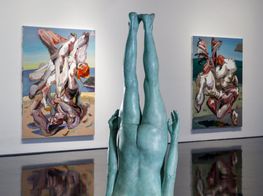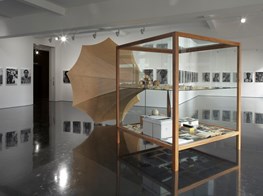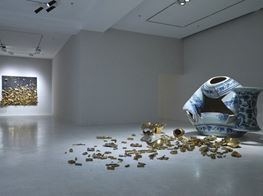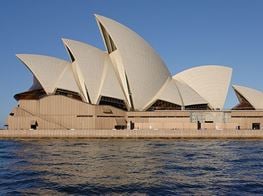Ben Quilty
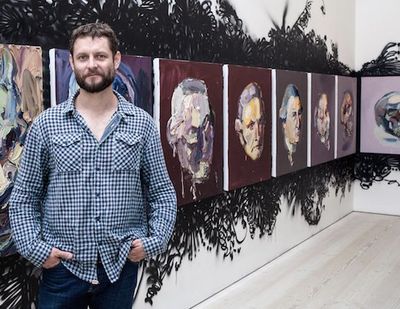
With a Bachelor of Visual Communication from University of Western Sydney, a certificate in Aboriginal Culture and History from Monash University, and a Bachelor of Visual Arts in Painting from the Sydney College of the Arts, Ben Quilty’s work is all about Australia and its social, political, cultural and historical landscapes. The genesis of his mission, perhaps, began when Quilty received a book on Australian landscape painting as an art prize in high school that included a reproduction of Evening Shadows, Backwater of the Murray, South Australia,
painted in London in 1880 by H.J. Johnstone. This was the first work of art acquired by the Art Gallery of South Australia in 1881, and as Lisa Slade writes in her essay on the artist, Quilty was at once seduced by the image and troubled by the representation of Aboriginal figures in a picturesque river landscape at twilight: a reiteration of 'an all too convenient, and at the time, popular allegory—the demise of Indigenous people and their traditional way of life.'
In his own work, Quilty inverts the depiction in Evening Shadows, resurrecting memories of the crimes inflicted on Australia’s land and its peoples, thus producing confrontations between Australia’s contemporary identity and its complex historical origins, wrought with omissions and assertions. The force of Quilty’s artistic approach is palpable in his first solo exhibition in the United Kingdom, which opened at Saatchi Gallery on 4 July. Curated by Nigel Hurst, the exhibition celebrates the announcement of Quilty as the overall winner of the inaugural Prudential Eye Awards in 2014, and comes just as Quilty joins Pearl Lam Galleries’ roster of painters. Showcasing landscapes and portraits rendered in thick impasto, canvases become at once rich and burdened: ripe with the seduction of luminous colour and natural form, and rotten with stories that seep through the paint. In this interview, Quilty discusses the themes in his work while ruminating on the function of painting and the role of the painter.
Your work focuses on Australia’s history and its cultural identity, which is tied up in its geographical position—essentially a European nation located in the Asia Pacific.
Yes, geographically Australia is so isolated but it still has all these roots back to England, which is kind of crazy because we are smack bang in the middle of Southeast Asia—I mean, Indonesia is 100 kilometres away from the coast of Darwin! So there is an extraordinarily hybrid scene here, and I think that the strongest contemporary art coming out of Australia is always talking about identity, from indigenous art to the art dealing with the country’s colonial past. But of course, this is not unique to Australia. If you look at someone like William Kentridge, his work is about feeling like an alien in someone else’s land.
This is really evident in the work presented as part of your exhibition at Saatchi Gallery, most apparently in Inhabit (2010), a series of sixteen impasto oil paintings depicting portraits that transition from the devil to Captain James Cook, to images of yourself, to a skull.
It’s funny how many artists I reference in those paintings. I really wanted each painting to work as a painting in its own right, but also collectively so as to form a kind of animation that dynamically links concept with form. On the one end, I looked at Francis Bacon, and I really felt like I was channelling that visual language. On the other end, I thought a lot about Ken Wisson, an Australian painter who has been living in Italy for 50 years and who I’ve looked at for a long time. So this work is definitely about the practice of painting while making direct observations of the colonial nature of our own existence, and how brief our history really is.
So it draws a kind of timeline, from a portrait of Captain Cook on one side to the portrait of yourself, reflecting on a specific cultural heritage and history that also links to your interest in the male psyche, as you observe it in Australian culture.
Well, the starting point for this series was two portraits of Captain James Cook, which really links to the male psyche, and the notion of masculinity—what it was and is and how it changes. In Australia, this links to quite an aggressive culture in a way: sport, competition, and weird rites of passage for young men involving alcohol, drugs and violence. But if you look back to Cook, who was sort of the forefather of this masculine identity in Australia, there is this story of his wife, who was asked, after Cook’s death, which of two portraits depicting him did she wish him to be remembered by. One was very effeminate, the second a very weathered image of Captain Cook as a rough seafarer. His wife said she wished the masculine portrait never existed.
But as much as Inhabit is about how masculinity changes, it is also a comment on who and how we are. I’ve been humoursly criticised for linking the portrait of Cook to the thick, cartoonish painting of the devil, before including myself in that lineage. But I always feel you can say whatever you want as long as you’re a willing participant and you put yourself in the frame, which is a spectrum of history in this case. And in thinking about that, one of my best friends is filmmaker Warwick Thornton, who won the Camera d’Or award at Cannes in 2009 for Samson & Delilah, who is also a man of the western desert. If you ask him what Cook represents to him, it is the beginning of the end for his culture.
By conflating Cook with the devil, the work somehow alludes to a certain kind of original sin when it comes to the colonisation of Australia.
Absolutely!
Which relates to the anxiety that underscores your portraits and your landscapes: both of which employ the aesthetics of the Rorschach test—psychological tests devised by Hermann Rorschach in the early-20th century—as a way in which to insert a kind of tension in your paintings.
With the landscapes, take Fairy Bower Rorschach, which depicts the site of a big aboriginal massacre in 1834 that is completely unmarked and exists only as an oral history. What happened was that on a day that the men of the community were away on an initiation ceremony, two young white British men came in and murdered 34 aboriginal people: all women, children and elderly people. But this place is not even marked as being a site of incredible violence and death. So, by making the site of this massacre, Fairy Bower Falls, into a Rorschach, I am playing with the idea of what Hermann Rorschach was doing when he designed these abstract inkblot tests to show if you were paranoid or delusional. What you see is quite clearly a landscape, so you are seeing something. At the same time, there is a level of humour in that you’re not meant to see anything, because if you did it would mean you are showing signs of delusional or paranoid behaviour.
The idea is that people might question what this landscape is about, and wonder why it has been rendered in the form of a psychoanalytical test. It’s about forcing the viewer to confront the real history of places like these, because there are places like this all over the world. There’s another one I’ve made of Kuta Beach, and I’m planning on making another one in Paris, where the police threw 63 Algerians killed in a riot off the bridge past Pont Neuf in 1966 during the war with Algeria—and that’s not marked either. When a community wants to forget something, they don’t mark it. This happened in my country, from one side to another. And even though these massacres are quite often well recorded and people know they happened, there is never any mention of it.
In the landscapes and portraits you have this play between abstraction and figuration, between knowing and not knowing. In this, there is the trauma of memory but equally the trauma of amnesia wrapped up in this kind of collective, historically induced post-traumatic stress that is inscribed not only in individual and collective identities, but also in the landscape. This is really evident in the self-portrait included in the show, of you as a Rorschach aptly titled Self Portrait Smashed Rorschach.
It’s funny. I made the portrait when I was really drunk, so I was kind of inducing a self-inflicted amnesia, which mirrors how communities do that to themselves: how they reorder history so as to forget. I mean, Australia’s good at that. But I shouldn’t complain, it happens everywhere. I spend a lot of time in Korea, and go to the border to see what’s happening in North Korea and there is no history being made there: history is a complete fabrication. Then you start to wonder, what history isn’t a fabrication? But there are still facts. There are still things that happen. And the documentary evidence of writing down events when they happen is as close as you can get to the truth.
This relates to the project you did in Afghanistan in October 2011, when you went as an official war artist attached to the Australian Defense Force deployed as part of Operation Slipper in Kabul, Kandahar, and Tarin Kot in Afghanistan and at Al Minhad Airbase in the United Arab Emirates. In this project, you took on that role of witness and documentarian and I wonder how you approached that.
I really went out of my way to tell the truth. To keep it apolitical and just respond to the experience, because I thought: there is so much going on, things are so complex politically and socially. In the end, my story was to tell the story of what was happening to the people involved and responding to the immediate experience of what was happening. It was a very visceral response to the human condition, and what happens to human beings under such circumstances.
And as I understand it, a big part of the project became about the post-traumatic stress experienced by those who had fought in the war.
It became completely about that really, inadvertently: I just had to respond to the experience as I went along. I was in Afghanistan for three weeks and then worked on the project for twelve months after I returned to Australia. There was one guy who had to be taken to hospital because he thought he was dying: he had cramps all over his body and uncontrollable vomiting. The doctor couldn't figure out what was wrong with him so she called me, and as soon as she learned he had been to Afghanistan, they brought a psychiatrist in, put him on anti-anxiety medication, and he was fixed instantly. It was pure anxiety. When you see what anxiety can do to a human being, it’s mind-blowing.
And this experience of post-traumatic stress relates very much to the legacy of Captain Cook, as you interpret it.
Cook is an amazing part of this whole idea of trauma because of the story of his explorations into the islands of the Pacific. There is one story of an island where they stayed for five months. When they left, many of his men were in tears, and in his diaries Cook wrote really beautifully and poetically about leaving this place and how the local people were incredibly moved to say goodbye. This was a sad parting of friends: a profound part of the history of human civilisation—a meeting between two cultures.
Then, eight years later, Cook returned and there were two people left alive—everyone else on the island had died from small pox, which Cook and his men bought over on their previous trip. The whole community was wiped out in very painful and tragic circumstances, and Cook knew that he was a part of it—he knew he’d caused their deaths inadvertently and with the best intentions.
Now, at the end of his life, Cook was accused of being very violent to his men and many historians speculated that he suffered from syphilis. But there is another reading of it, which is an idealistic artist version: that Cook saw how, through his profession of discovering the world, he was destroying the world at the same time. Of course there is no way to know if that was the case and it is quite possible he had syphilis, but that transformation—from being a worldly young man to being a broken, violent older man—could just as easily have happened from seeing the complete destruction he had cast.
This constant tension between creation and destruction: how does this feed into your paintings in terms of technique and application?
The act of making a Rorschach is that you actually have to destroy something that you’ve spent a lot of time making, to make something more beautiful, so you are sort of glorifying destruction. This reflects the destruction of the original thing to make something more geometric. In defense of painting as a practice, to get to the final thing—of actually making the thing—is a very meditative process, and if you are making an image that is socially charged, inevitably the thinking leads to an object in the end, and that is something very powerful.
The act of painting as a process of thinking.
Yes. It’s a practical part of the thought process when it comes to awareness, to philosophy and social theory. This is what it has always been for me. It’s about the organic nature of hand-eye coordination and about building up a visual language with which you might respond to the world politically, socially and environmentally.
Do you believe that painting has a transformative function, or potential?
Well, I think what happened with postmodernity, painting was killed off and it has become a subculture. So there has been a full rebirth with more vigour and less care—I really have never cared what anyone thinks about my practice: this is what I do and I will keep on doing it. It is the easiest way for me to make a mark and to make a statement.
You recently joined Pearl Lam Galleries, which is amazing given the gallery’s strong representation of Chinese painting, particularly abstraction, including Zhu Jinshi. I wonder how you relate to the painters you will be joining?
It’s amazing, really, and I’m really excited to be part of that context because there are some amazing painters with this gallery. You mention Zhu Jinshi: I mean, those paintings are not about abstraction to me. They are about figuration. Of course I know they are abstract, but they go beyond abstraction; they are as far as you can go with regards to the act of painting, and I am so drawn to them.
In general, I think there is a strong movement of painting in Asia: a real tradition of paint. And I’d like to think that in Asia maybe we missed that whole post-modernist movement of making art about art, which is so tedious when you think about how we are living on a planet that is teetering so close to the edge. —[O]

